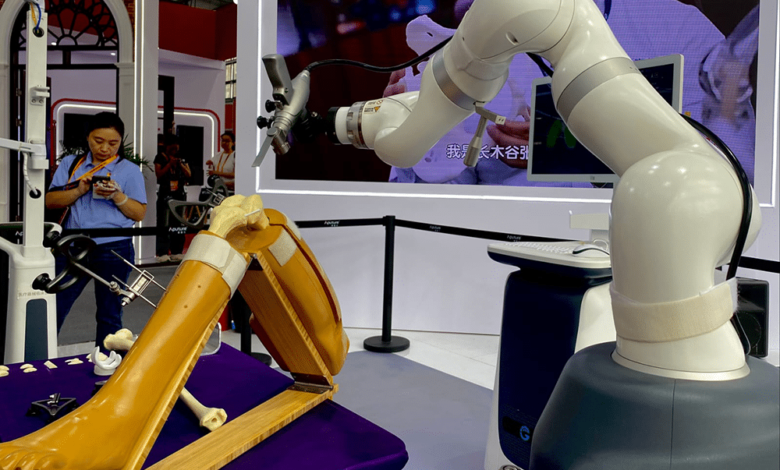World’s First AI Orthopedic Surgical Robot Debuted at CIFTIS – Startup Pakistan

The introduction of the “ROPA “(which likely stands for Robotic Orthopedic Precision Assistant) represents a significant leap forward in the field of orthopedic surgery. This AI-driven orthopedic surgical robot showcases advanced technological innovation, addressing several challenges faced in traditional orthopedic procedures:
1. Preoperative Planning: Relying less on the surgeon’s experience and more on precise data analysis, ROPA can create a personalized 3D model of the patient’s anatomy using CT scans. This helps surgeons to better visualize the surgical site and plan the procedure down to the finest detail, reducing the reliance on subjective assessments.
2. Visual and Positional Accuracy: During surgery, ROPA employs a system that acts as a “digital eye,” providing real-time monitoring and tracking of the patient’s anatomical structures. This eliminates potential blind spots and enhances the surgeon’s ability to navigate complex anatomical landscapes, thereby improving accuracy and reducing the risk of errors.
3. Precision and Control: The robot’s ability to perform precise movements with sub-millimeter accuracy is a game-changer. It allows for controlled force application, minimizing the possibility of human error and ensuring that each cut and placement is done with utmost precision.
4. Surgical Outcomes: By mitigating some of the inherent risks associated with traditional orthopedic surgery, ROPA contributes to improved surgical outcomes, potentially reducing recovery times and lowering the incidence of postoperative complications.
The ROPA’s presence at the China International Fair for Trade in Services (CIFTIS) underscores the growing importance of AI and robotics in healthcare and the commitment to advancing medical technology. Such advancements not only improve patient care but also pave the way for more efficient and safer surgical practices.
Source link



